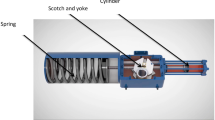Abstract
Radio frequency (r.f.) has been investigated as a means of externally powering miniature and long term implant telemetry systems. Optimum power transfer from the transmitter to the receiving coil is desired for total system efficiency. A seven step design procedure for the transmitting and receiving coils is described based on r.f., coil diameter, coil spacing, load and the number of turns of the coil. An inductance tapping circuit and a voltage doubler circuit have been built in accordance with the design procedure. Experimental results were within the desired total system efficiency ranges of 18% and 23%, respectively.
Sommaire
On a étudié la fréquence radio (f.r.) en tant que source extérieure permettant de faire fonctionner les systèmes télémétriques d'implants miniatures à long terme. Afin d'assurer une efficacité totale au système, il est nécessaire d'obtenir un transfert de puissance optimum de l'émetteur à la bobine réceptrice. On donne la description d'une technique de conception en sept temps, fondée sur la fréquence radio, le diamètre de la bobine, l'espacement des spires, la charge et le nombre de tours de la bobine. Un circuit de captage de tension par induction et un circuit doubleur de tension ont été construits conformément à la méthode de conception. Les résultats expérimentaux étaient compris dans les limites d'efficacité totale souhaitable pour le système, soit 18% à 23%, respectivement.
Zusammenfassung
Hochfrequenz wurde als Mittel zur externen Energieversorgung von Miniatur und langfristigen Implantat-Telemetriesystemen untersucht. Zur Verwirklichung der höchsten Leistungsfähigkeit braucht das System optimale Energieübertragung von Sendegerät zu Empfangsspule. Ein auf Hochfrequenz beruhendes siebenstufiges Konstruktionssystem für Sende- und Empfangsspulen wird beschrieben, mit Hinweisen über Spulendurchmesser, Spulenanordnung, Ladung und die Anzahl der Wicklungen. Ein Induktionsanzapfstromkreis und ein Spannungsverdoppler wurden dem Konstruktionsverfahren entsprechend gebaut. Versuchsergebnisse lagen im Bereich des gewünschten Systemleistungsgrades von 18% und 23%.
Similar content being viewed by others
References
Terman, F. E. (1943).Radio engineers handbook. McGraw-Hill, New York.
Smythe, W. R. (1968)Static and dynamic electricity. McGraw-Hill.
Harnwell, G. P. (1949)Principles of electricity and electromagnetism. McGraw-Hill
Bibliography
Adams, R. M., Fromme, G. L., Dizon, D. andAnstadt, G. L. ‘A Microwatt VHF Telemetry system for implantation in small animals’ In:Proceedings of the National Telemetering Conference, 1963.
MacKay, R. S., ‘Telemetering from within the body of animals and man: Endoradiosondes.” In:Biomedical Telemetry, C. A. Caceres, ed. Academic Press, 1965.
Douglas, D. W. andSeal, H. R., ‘Internalized animal telemetry systems: Electronic considerations’ In:32nd Annual Meeting of Aerospace Medical Association, Chicago, April 21, 1961.
Kavanagh, D. A., ‘Development of miniature telemetry system’ R. F. Communication, Inc. Rochester, N. Y., Report SAMJ-TDR-63-80, 1963
Author information
Authors and Affiliations
Rights and permissions
About this article
Cite this article
Ko, W.H., Liang, S.P. & Fung, C.D.F. Design of radio-frequency powered coils for implant instruments. Med. Biol. Eng. Comput. 15, 634–640 (1977). https://doi.org/10.1007/BF02457921
Received:
Issue Date:
DOI: https://doi.org/10.1007/BF02457921




